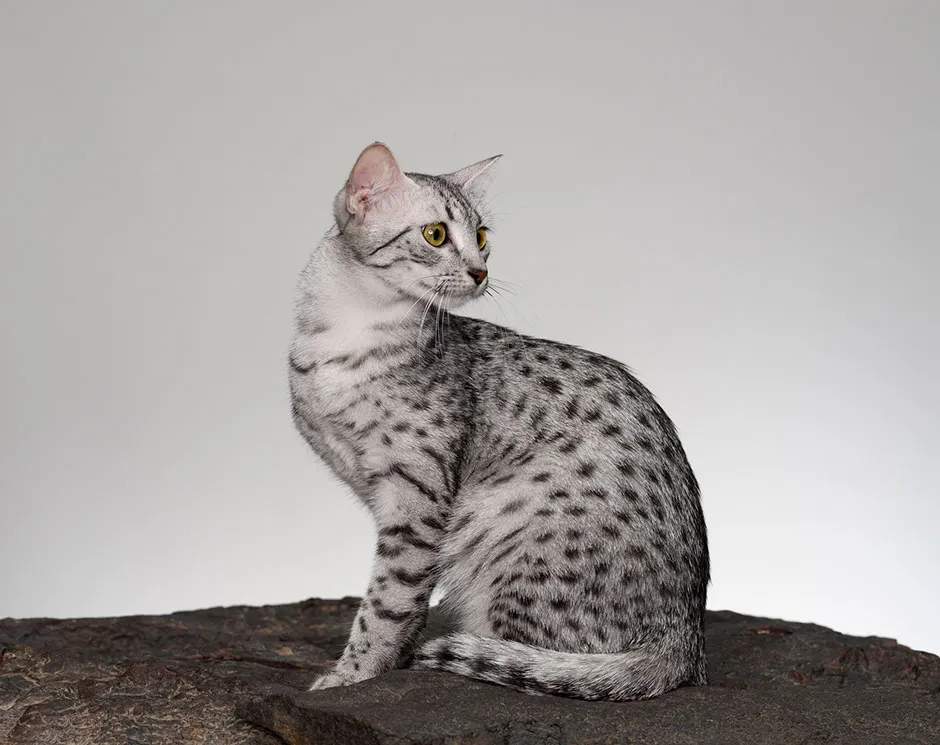Selective breeding of cats may have impacted their ability to effectively communicate through facial expressions, according to scientists.
Pedigree flat-faced (brachycephalic) cats with big eyes or “grumpy” features are often known to have breathing difficulties, problems with their eyes, and other health conditions.
Despite their painful medical issues, these breeds have increased in popularity in recent years, with celebrities such as Taylor Swift and Ed Sheeran fuelling the trend.
But in a study published in the journal Frontiers in Veterinary Science, researchers have found these exaggerated features may also negatively affect a cat’s ability to express themselves via their faces.
Read more about cats:
- Why do cats knead?
- Want to make friends with a cat? Blink slowly, say scientists
- Eight mind-blowing facts about cats, according to science
“Our work suggests that breed-related issues may not only affect cats’ physical health, but also their communicative abilities," said lead researcher Dr Lauren Finka, a feline behaviour and welfare specialist in Nottingham Trent University’s School of Animal, Rural and Environmental Sciences.
“During the course of the cat’s domestication, we have vastly altered their physical appearance, creating a diverse range of modern cat breeds.
“Our preference for them to have features that we find cute or similar to the expressions we recognise in humans – such as cuteness, vulnerability or a frowning grumpy appearance – may have unintentionally disrupted their ability to clearly express themselves and communicate.”

As part of the study, the researchers analysed pictures of nearly 2,000 cat faces. They studied popular breeds, which they categorised into flat-faced ('brachycephalic') breeds, such as Persian, Scottish Fold, Devon Rex and British shorthair, breeds with more proportioned features ('mesocephalic'), such as Norwegian Forest and Ragdoll, and breeds with elongated faces ('dolichocephalic'), such as Bengal and Egyptian Mau.
They found many flat-faced breeds appeared to display more “pain-like” expressions, even though they were not considered to be in distress, when compared with those with proportioned or elongated faces.
For example, the researchers said, Scottish Folds’ facial features scored higher for pain-like expressions, when compared to domestic short-haired cats that were actually in pain.

“Many cat owners will be aware of the different facial expressions their cats display and that these expressions may change depending on what the cat needs or how they are feeling," Dr Finka said.
“Our findings suggest that at a species level, these signals may be disrupted; if certain breeds have been inadvertently selected to look grumpy or in pain, we might be motivated to care for or give these cats more attention than they would prefer, or conversely be unable to tell when they might actually be in pain and need our help.
“Cats may also struggle to communicate with one another which might lead to increased conflict in multi-cat homes.”
Reader Q&A: Why are Sphynx cats hairless?
Asked by: Catherine Murphy, via email
It’s due to a mutation in the gene that is responsible for providing hairs with their keratin protein as they emerge from the follicle. The hair is formed, but it has a weaker structure and becomes easily damaged and dislodged.
This genetic mutation can occur in cats naturally, but selective breeding for this trait since the 1960s has produced the Sphynx breed. Some Sphynx cats are completely bald, while others have short downy fur over their bodies or in isolated areas.
Read more: